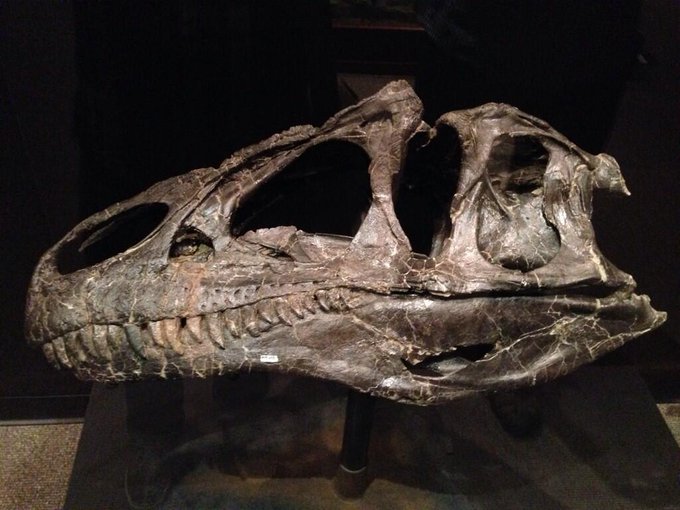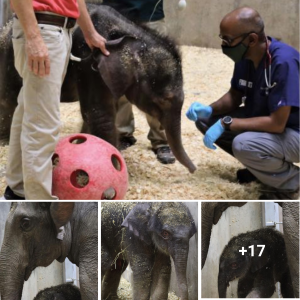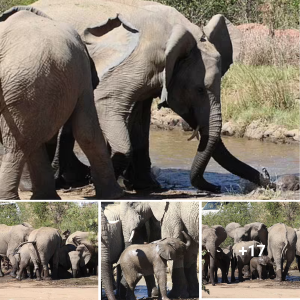A new species of carnivorous theropod dinosaur has been identified from the fossilized remains discovered in the 1990s in northeastern Utah and Wyoming, the United States.

A group of Allosaurus jimmadseni attacks a juvenile sauropod dinosaur. Image credit: Todd Marshall.
The newly-discovered dinosaur belongs to Allosauridae, a group of small to large-bodied, two-legged carnivorous dinosaurs that lived during the Jurassic and Cretaceous periods.

Dubbed Allosaurus jimmadseni, the species inhabited the flood plains of western North America during the Jurassic period.
The ancient creature was 8 to 9 m (26-29 feet) long and had a mass of around 1.8 metric tons. It had relatively long legs and tail, and long arms with three sharp claws.
At 155 million years old, Allosaurus jimmadseni is the geologically-oldest species of Allosaurus predating the more well-known Allosaurus fragilis.

The new species is distinguished by a number of unique features, including low crests running from above the eyes to the snout and a relatively narrow back of the skull with a flat surface to the bottom of the upper skull under the eyes.
Its skull was weaker with less of an overlapping field of vision than the younger Allosaurus fragilis.

“Previously, paleontologists thought there was only one species of Allosaurus in Jurassic North America, but this study shows there were two species — the newly-described Allosaurus jimmadseni evolved at least 5 million years earlier than its younger cousin, Allosaurus fragilis,” said Dr. Mark Loewen, a paleontologist at the Natural History Museum of Utah and the University of Utah.
“The skull of Allosaurus jimmadseni is more lightly built than its later relative Allosaurus fragilis, suggesting a different feeding behavior between the two.”

A cast of the skeleton and skull of Allosaurus jimmadseni as it was discovered and now on exhibit at Dinosaur National Monument in Utah. Image credit: Dan Chure.
Dr. Loewen and his colleague, Dr. Daniel Chure, a retired paleontologist at Dinosaur National Monument, described the new species from two well-preserved skeletons and skulls.
The first specimen was found by Dr. George Engelmann from the University of Nebraska, Omaha, on July 15, 1990 during a contracted paleontological inventory of the Morrison Formation of Dinosaur National Monument in northeastern Utah.

The second specimen was found by the commercial fossil collecting company Siber+Siber, Ltd. at the Howe Quarry, the Morrison Formation, Wyoming, in 1991.
“Recognizing a new species of dinosaur in rocks that have been intensely investigated for over 150 years is an outstanding experience of discovery,” Dr. Chure said.
“Allosaurus jimmadseni is a great example of just how much more we have to learn about the world of dinosaurs.”
“Many more exciting fossils await discovery in the Jurassic rocks of the American West.”



